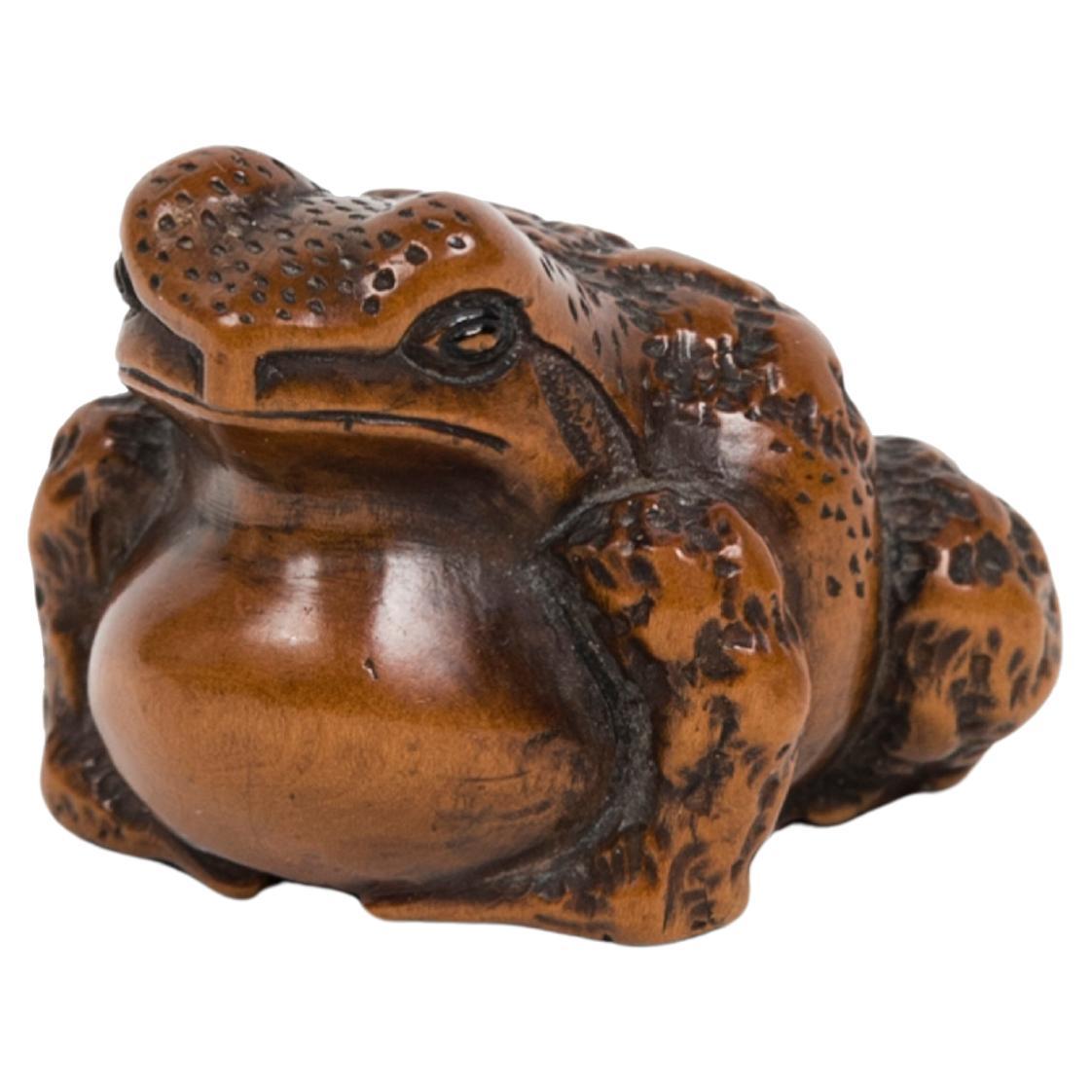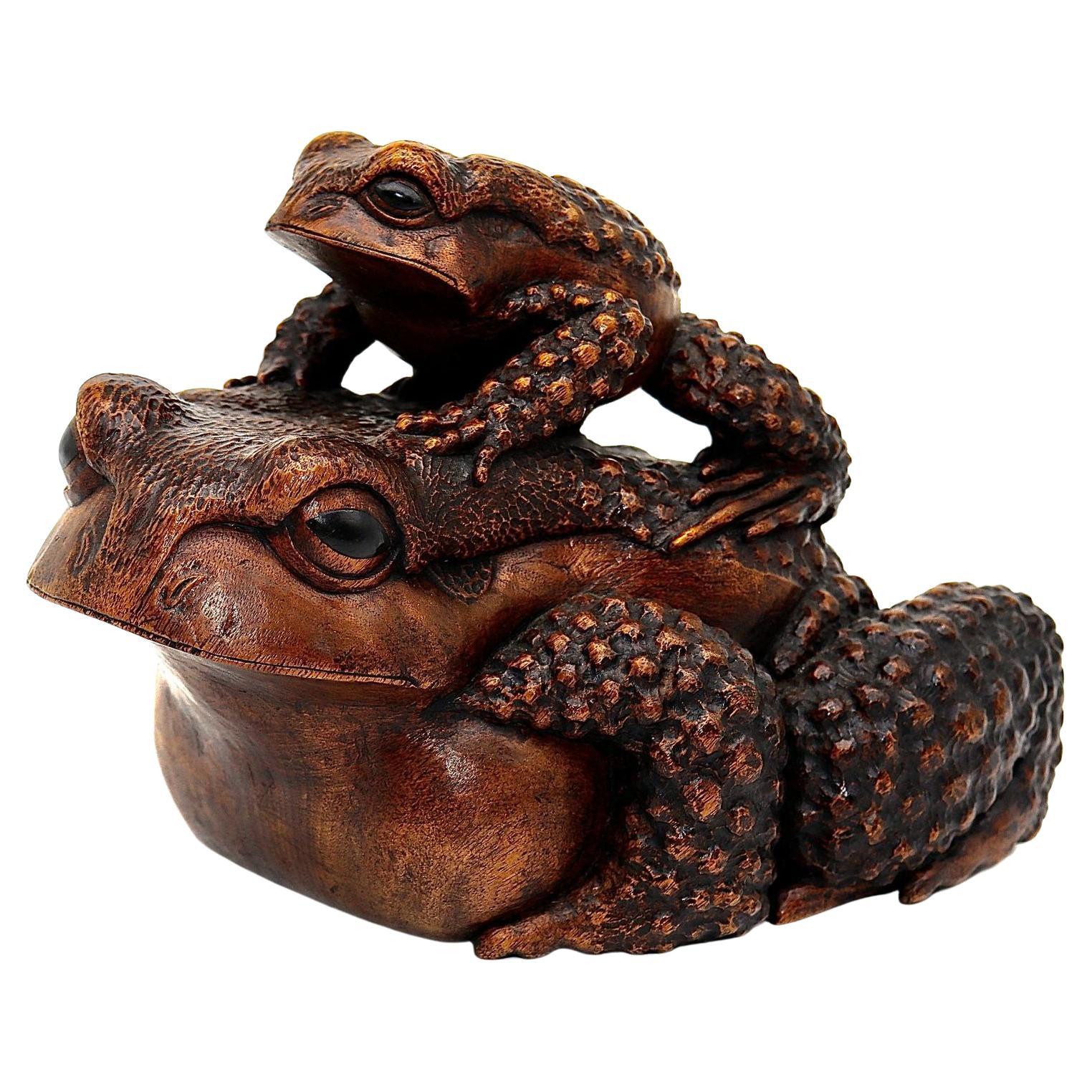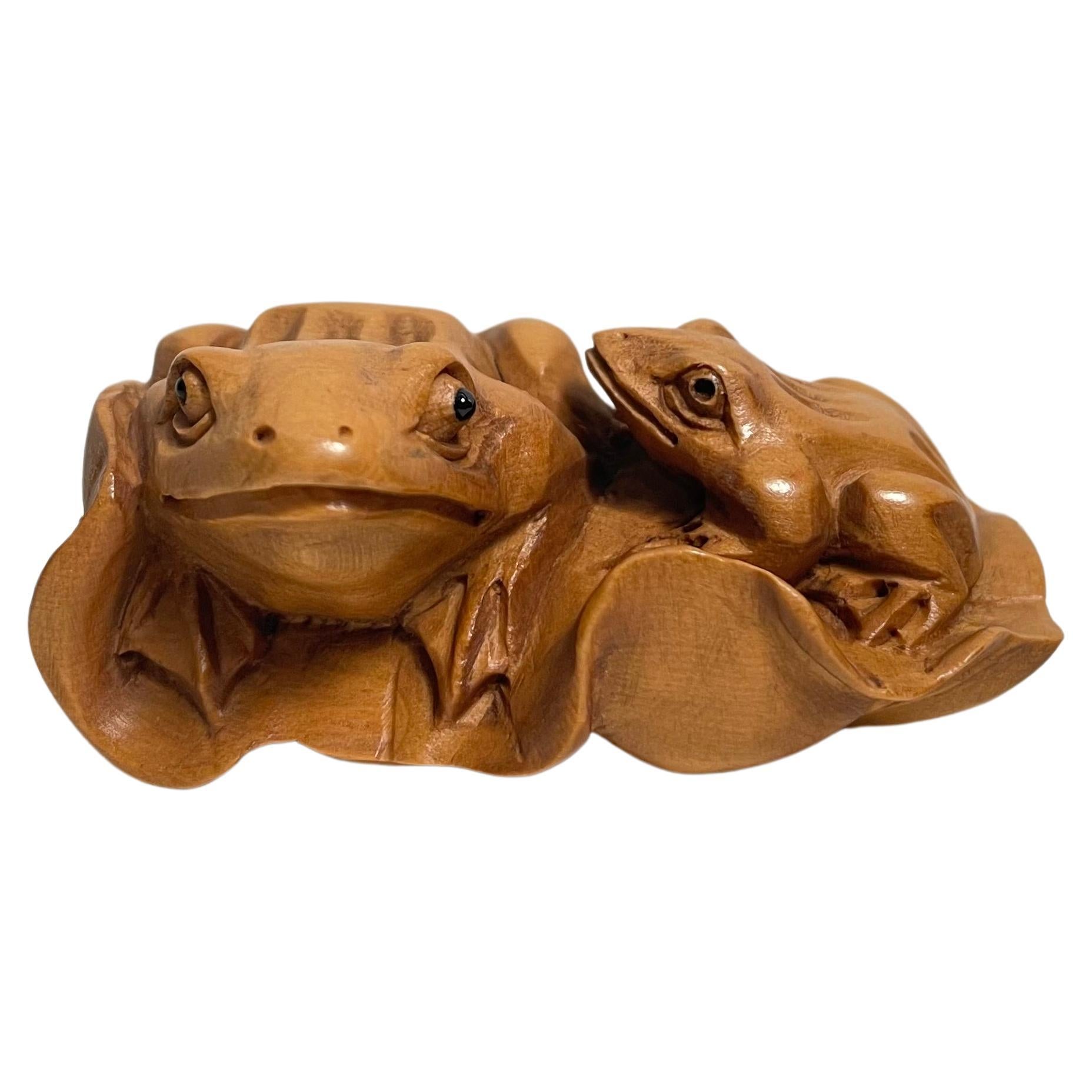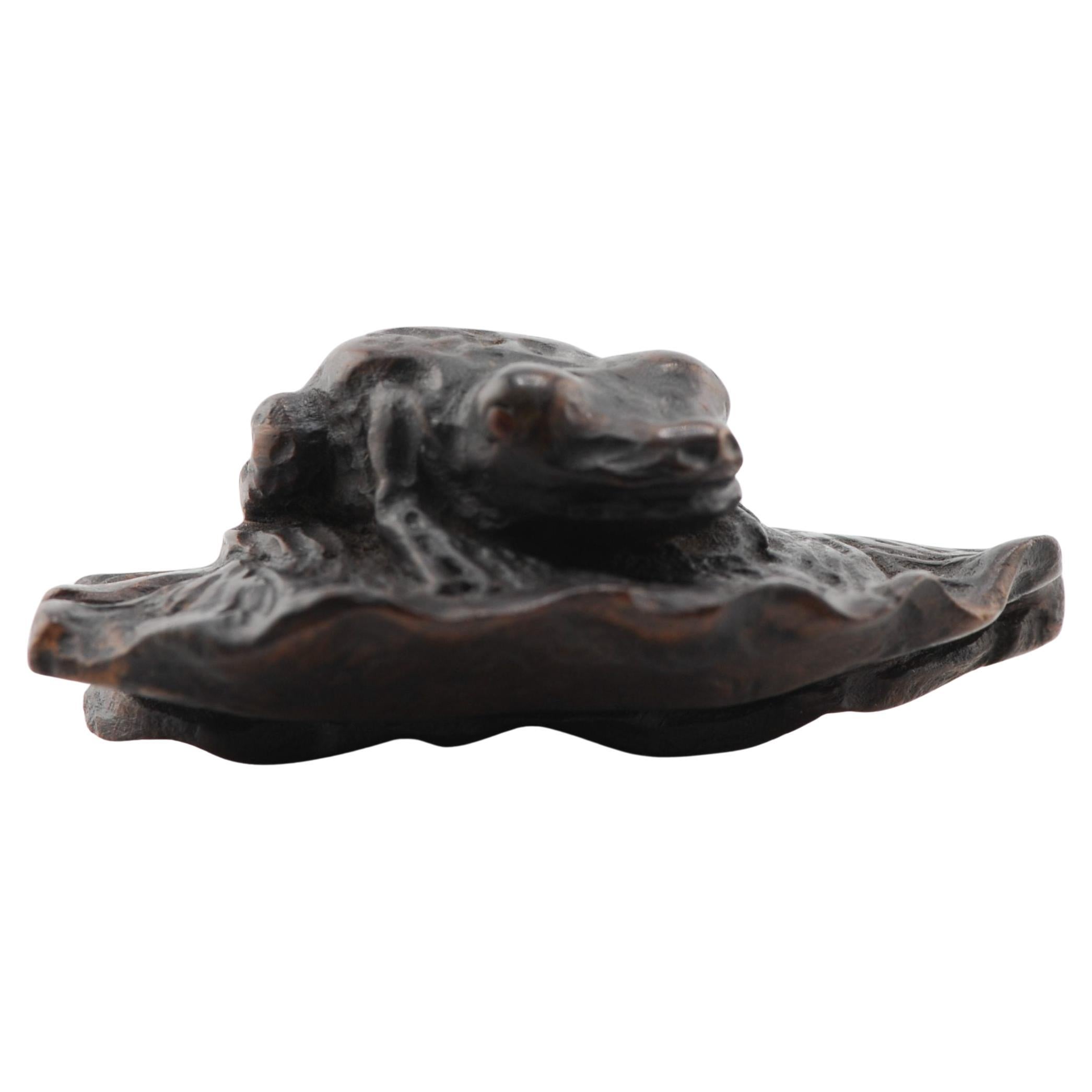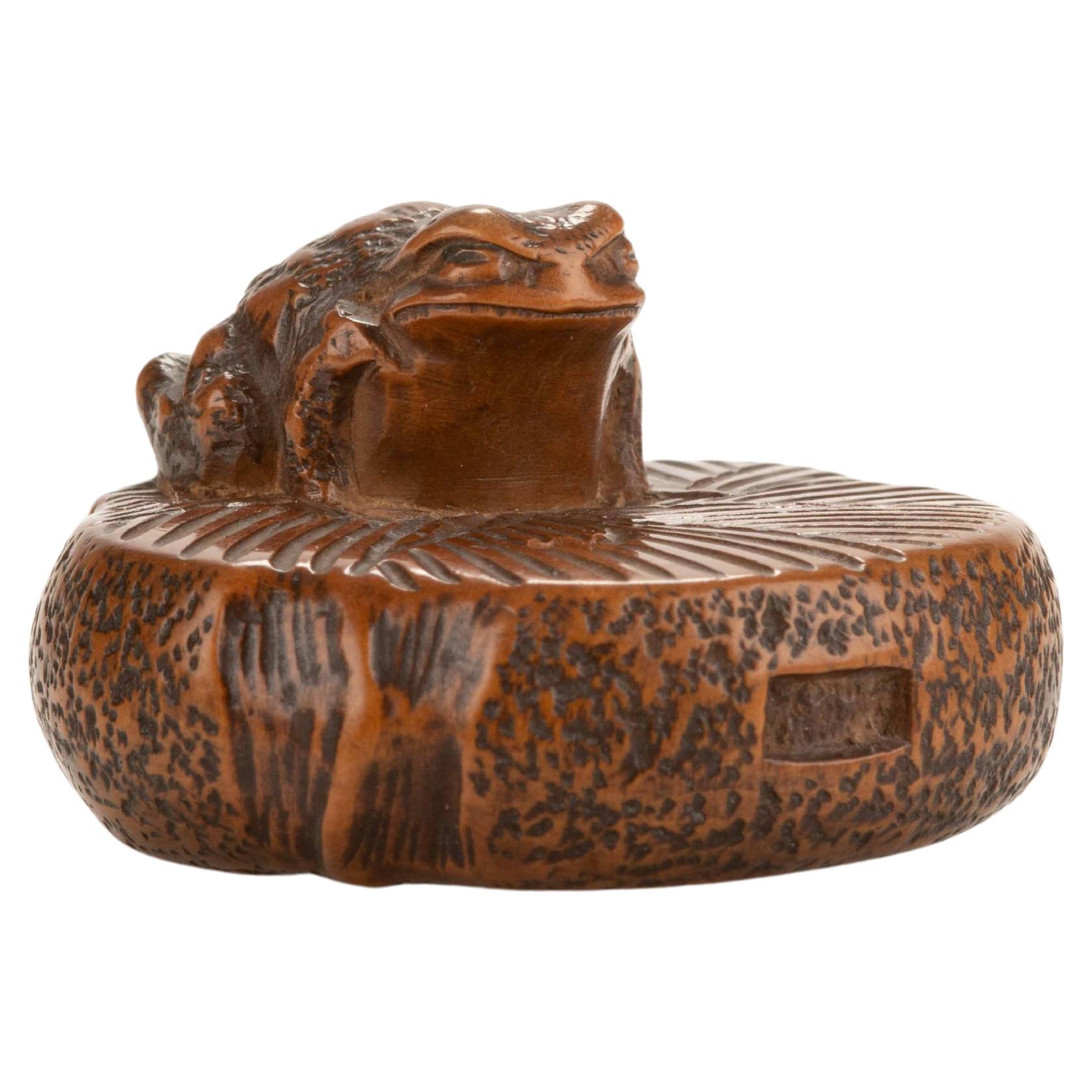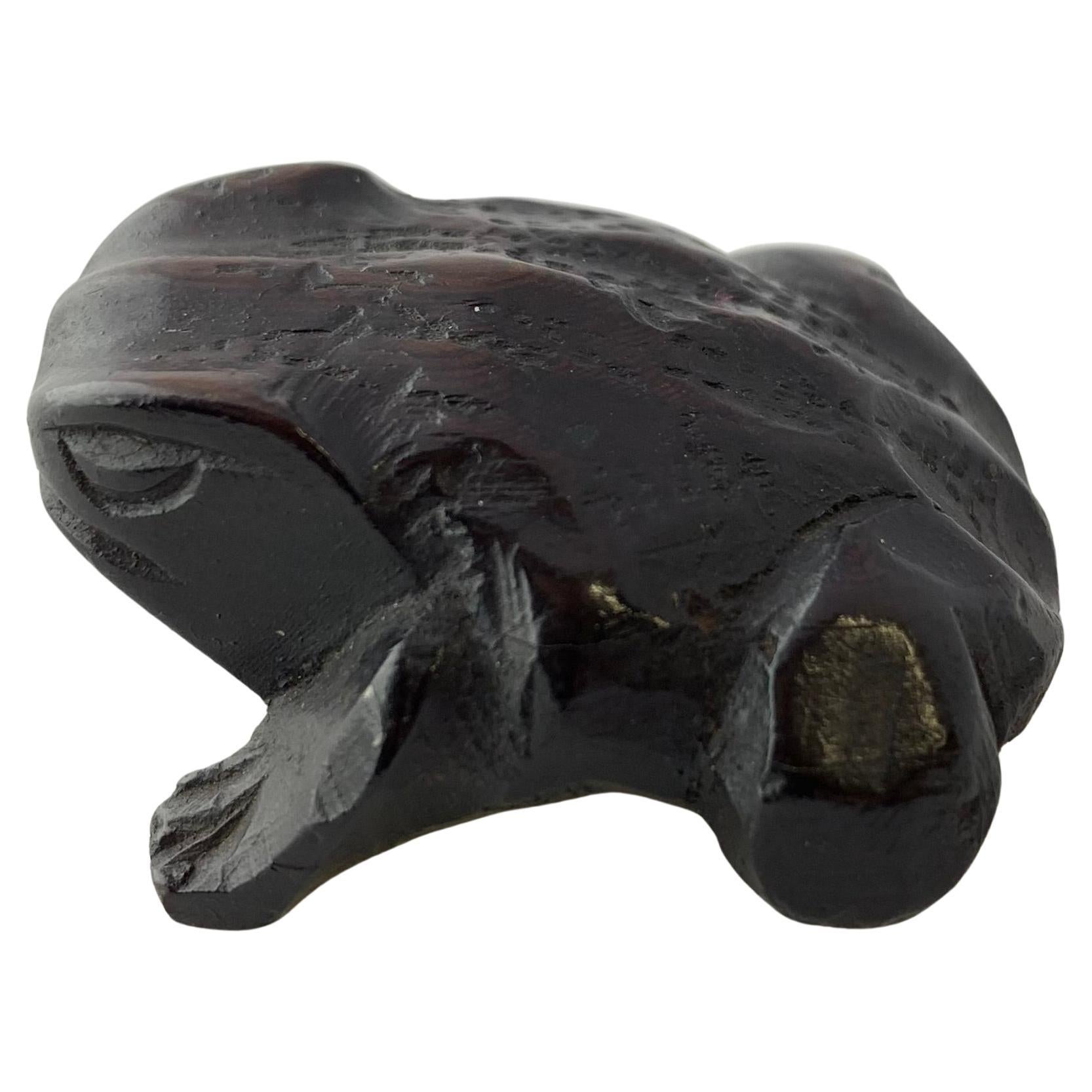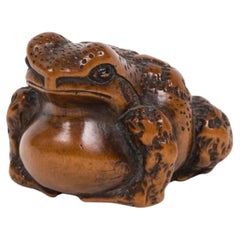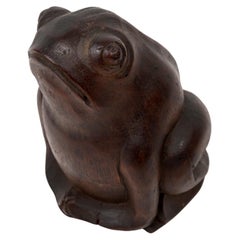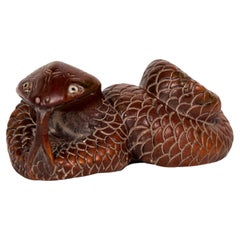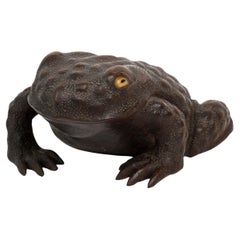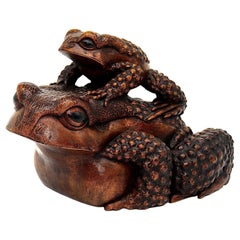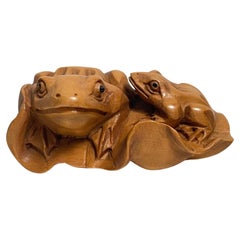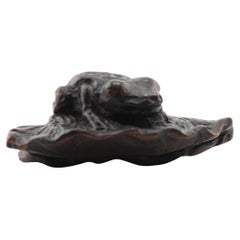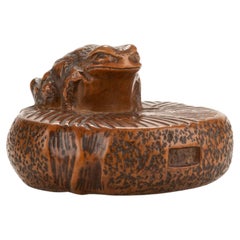Items Similar to Japanese boxwood netsuke in the form of three toads stacked on each other
Want more images or videos?
Request additional images or videos from the seller
1 of 7
Japanese boxwood netsuke in the form of three toads stacked on each other
$2,385.82
£1,763.87
€2,000
CA$3,281.66
A$3,647.77
CHF 1,912.08
MX$44,548.13
NOK 23,871.27
SEK 22,458.41
DKK 15,225.97
About the Item
Netsuke in boxwood representing a group of three toads, laying on a flat base, inlaid eyes made of water buffalo horn. Signed underneath the platform. The frog (kaeru) is associated with luck and wealth. In feudal Japan, tax collectors could be recognized by the frog-shaped netsuke they wore on their belts. Kaeru means both "frog" and "coming home" in Japanese. This extension of meaning is due to the frog's ability to return each year to the pond where it was born.
Japan – Meiji era (1868-1912)
Height: 4.5 cm - length: 4 cm - width: 2.5 cm
- Dimensions:Height: 1.78 in (4.5 cm)Width: 0.99 in (2.5 cm)Depth: 1.58 in (4 cm)
- Style:Meiji (Of the Period)
- Materials and Techniques:
- Place of Origin:
- Period:
- Date of Manufacture:1868-1912
- Condition:Wear consistent with age and use.
- Seller Location:PARIS, FR
- Reference Number:Seller: 2025-13661stDibs: LU8311244436742
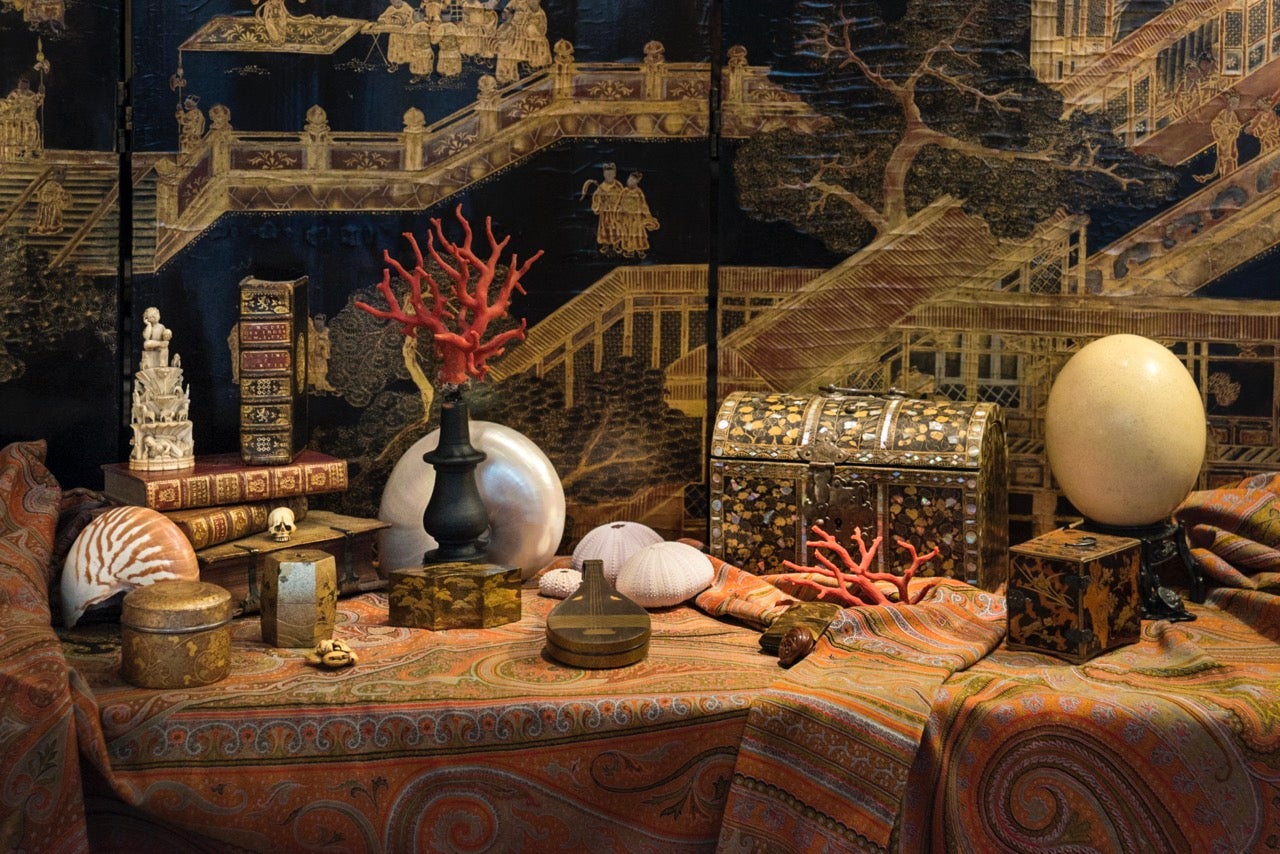
About the Seller
No Reviews Yet
Vetted Professional Seller
Every seller passes strict standards for authenticity and reliability
Established in 2013
1stDibs seller since 2023
- ShippingRetrieving quote...Shipping from: PARIS, France
- Return Policy
Authenticity Guarantee
In the unlikely event there’s an issue with an item’s authenticity, contact us within 1 year for a full refund. DetailsMoney-Back Guarantee
If your item is not as described, is damaged in transit, or does not arrive, contact us within 7 days for a full refund. Details24-Hour Cancellation
You have a 24-hour grace period in which to reconsider your purchase, with no questions asked.Vetted Professional Sellers
Our world-class sellers must adhere to strict standards for service and quality, maintaining the integrity of our listings.Price-Match Guarantee
If you find that a seller listed the same item for a lower price elsewhere, we’ll match it.Trusted Global Delivery
Our best-in-class carrier network provides specialized shipping options worldwide, including custom delivery.More From This Seller
View AllJapanese Netsuke of a croaking Toad in boxwood
Located in PARIS, FR
Netsuke of a wooden toad with its throat swollen. Made entirely in boxwood, the skin is treated with detail, the naturalistic pause suggests that the toad is croaking, the smooth tex...
Category
Antique Late 18th Century Japanese Sculptures and Carvings
Materials
Boxwood
Japanese bamboo sculpture of a seated toad realised in the rhizome
Located in PARIS, FR
Bamboo sitting toad. The node of the wood is used as the base of the statuette.
The toad and the frog, referred to by the same term in Japanese (kaeru) are associated with good luck...
Category
Early 20th Century Japanese Taisho Sculptures and Carvings
Materials
Bamboo
Netsuke in the form of a snake in boxwood with inlaid eyes and signature
Located in PARIS, FR
Boxwood netsuke of a snake tangled on itself, each scale is carved with precision, and the overall brown patina is intense. Even though snakes are almost always bad omen in Asia, it ...
Category
Antique Early 19th Century Meiji Sculptures and Carvings
Materials
Boxwood
Japanese Okimono of a Wooden Toad with its eyes inlaid
Located in PARIS, FR
Carving of a wooden toad with eyes inlaid in hard stone. Its surface is carved with great precision in order to grant him a both smooth and grainy texture, it stands in an amusing pa...
Category
Early 20th Century Japanese Taisho Sculptures and Carvings
Materials
Hardwood
Netsuke in boxwood in the form of three clams
Located in PARIS, FR
Boxwood nestuke in the form of three clams or bivalve shells, probably of the Ruditapes philippinarum sub species that can be found all the way from Siberia to Philippines, and Japan...
Category
Antique 18th Century Japanese Edo Sculptures and Carvings
Materials
Boxwood
Japanese Professional sneezer Boxwood Netsuke
Located in PARIS, FR
Boxwood netsuke of a seated professional sneezer depicted as an old man with his right hand raised, holding an stick to tickle himself. His head is slightly raised, his eyes practica...
Category
Antique Late 18th Century Japanese Edo Sculptures and Carvings
Materials
Boxwood
You May Also Like
19th Century Japanese Carved Wood Sculpture of Toads Edo Period Signed
Located in North Miami, FL
Finely carved as a small toads on top of a large toad, the surface finished to resemble the toad's rugged skin, signature on underside. In Japan, the toad is ...
Category
Antique Early 19th Century Japanese Animal Sculptures
Materials
Wood
Japanese Wooden Netsuke 'Two Frogs on the Lotus Leaf' 1950s Showa era
Located in Paris, FR
This is an antique wooden netsuke made in Japan around Showa period 1950s.
Netsuke is a miniature sculpture, originating in 17th century Japan.
Initially a simply-carved button fast...
Category
Vintage 1950s Japanese Showa Animal Sculptures
Materials
Wood
Old Wooden Netsuke 19/20th C Japanese Japan FROG Meiji Period
Located in Amsterdam, Noord Holland
Lovely and very detailed piece. Unsigned. Japan 19th or 20th century.
Weight: 8 grams
Provenance: Collected in the 1980's. From the collection of Clemens Merkelbach van Enkhuizen, ...
Category
Antique 19th Century Japanese Meiji Ceramics
Materials
Metal, Bronze
$637 Sale Price
20% Off
A boxwood netsuke depicting a toad on a circular stone millstone, signed Masanao
Located in Milano, IT
Boxwood netsuke depicting a toad climbing a circular stone millstone. The toad's wrinkled skin is meticulously engraved to create a realistic appearance. The netsuke has a shiny pati...
Category
Antique 19th Century Japanese Japonisme Antiquities
Materials
Boxwood
Japanese Carved Wood Netsuke of a Frog, Taisho Period
Located in Point Richmond, CA
Hand carved boxwood frog netsuke dating from the Meiji period. The frog (kaeru) is associated with luck and wealth in Japanese culture. Kaeru in is a homophone meaning both "frog" an...
Category
Early 20th Century Japanese Taisho Animal Sculptures
Materials
Boxwood
Old Wooden Netsuke Japanese Frog Figure Meiji Period, 19/20th Century
Located in Amsterdam, Noord Holland
Lovely and very detailed piece. Unsigned. Japan 19th or 20th century.
Weight: 8 grams
Provenance: Collected in the 1980’s. From the collection of Clemens Merkelbach van Enkhuizen...
Category
20th Century Japanese Meiji Animal Sculptures
Materials
Wood
